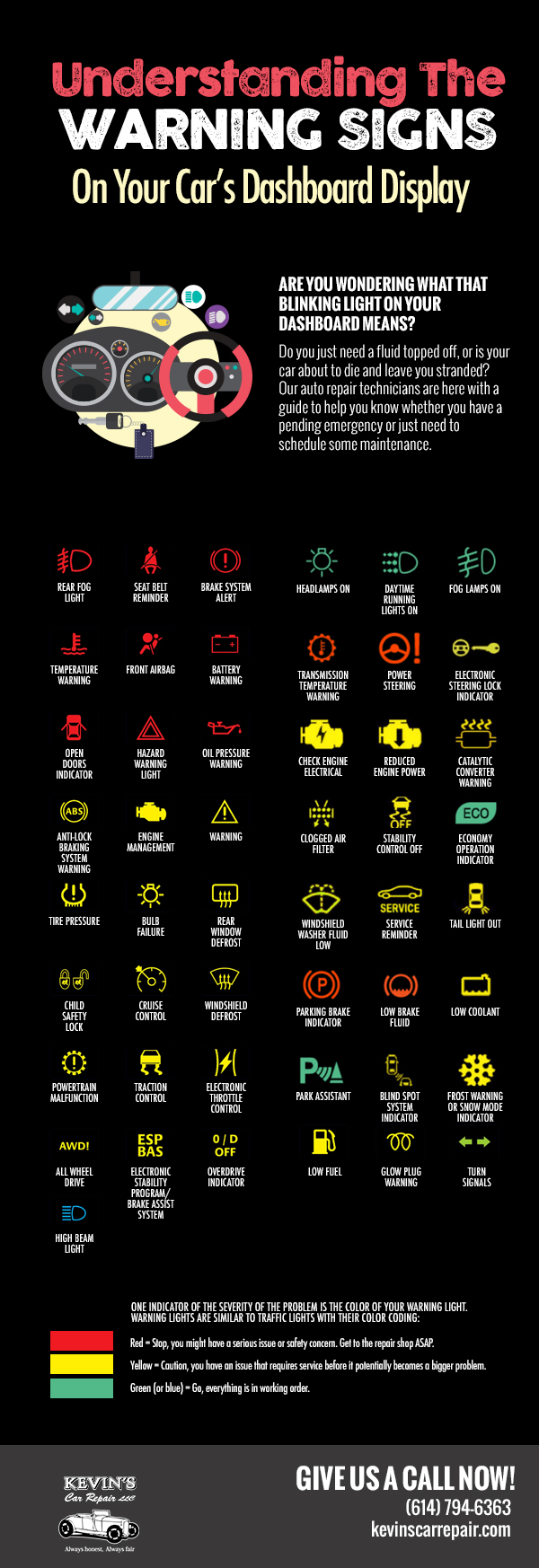Understanding The Significance Of Your Car'S Warning Signals: What They In Fact Stand For
Understanding The Significance Of Your Car'S Warning Signals: What They In Fact Stand For
Blog Article
Material By-Faulkner Forbes
When you lag the wheel, those beautiful caution lights on your dashboard can be a little bit complicated. Do aquacarservicesflatbush recognize what they're trying to inform you concerning your automobile's health and wellness? Understanding the value of these lights is vital for your safety and the longevity of your automobile. So, the following time among those lights pops up, would not you wish to understand its message precisely and take the essential actions to address it?
Common Caution Lighting and Interpretations
Recognize usual caution lights in your cars and truck and understand their definitions to guarantee safe driving.
The most regular warning lights consist of the check engine light, which signals issues with the engine or emissions system. If this light begins, it's critical to have your automobile inspected promptly.
The oil stress alerting light shows reduced oil stress, needing instant focus to avoid engine damage.
A blinking battery light might recommend a faulty billing system, potentially leaving you stranded if not attended to.
The tire pressure monitoring system (TPMS) light signals you to reduced tire pressure, impacting vehicle security and fuel effectiveness. Ignoring this could result in hazardous driving problems.
The abdominal muscle light shows a trouble with the anti-lock braking system, compromising your capability to stop quickly in emergency situations.
Last but not least, the coolant temperature level alerting light warns of engine getting too hot, which can lead to extreme damages otherwise fixed promptly.
Recognizing these usual caution lights will certainly assist you resolve problems quickly and keep secure driving conditions.
Value of Prompt Attention
Comprehending the common warning lights in your vehicle is only the first step; the relevance of quickly attending to these cautions can't be emphasized sufficient to ensure your safety and security on the road.
When a caution light brightens on your control panel, it's your cars and truck's way of connecting a prospective issue that needs focus. Ignoring these cautions can bring about much more extreme problems in the future, jeopardizing your security and potentially costing you much more in repairs.
Trigger focus to warning lights can avoid breakdowns and accidents. As related web site , a blinking check engine light might show a misfire that, if left neglected, can cause damages to the catalytic converter. Addressing this promptly can conserve you from a costly fixing.
Likewise, a brake system warning light could signify reduced brake liquid or worn brake pads, important components for your safety when driving.
DIY Troubleshooting Tips
If you discover a warning light on your control panel, there are a couple of do it yourself troubleshooting pointers you can attempt before seeking professional help.
The primary step is to consult your cars and truck's handbook to understand what the specific caution light suggests. Occasionally the issue can be as easy as a loose gas cap activating the check engine light. Tightening up the gas cap might resolve the issue.
One more common concern is a low battery, which can set off numerous advising lights. Checking the battery connections for corrosion and ensuring they're safe may take care of the trouble.
If a warning light lingers, you can attempt resetting it by separating the vehicle's battery for a few mins and then reconnecting it. Furthermore, examining your vehicle's fluid degrees, such as oil, coolant, and brake liquid, can help troubleshoot advising lights associated with these systems.
https://www.news5cleveland.com/money/consumer/supply-shortages-beginning-to-impact-auto-shops-as-prices-delivery-times-for-parts-surge , recognizing your automobile's caution lights is essential for maintaining your vehicle running efficiently and securely. By immediately dealing with these alerts and understanding what they imply, you can avoid expensive repair work and prospective failures.
Remember to consult your car's handbook for specific details on each cautioning light and take action accordingly to ensure a hassle-free driving experience.
Remain educated, stay risk-free when traveling!
